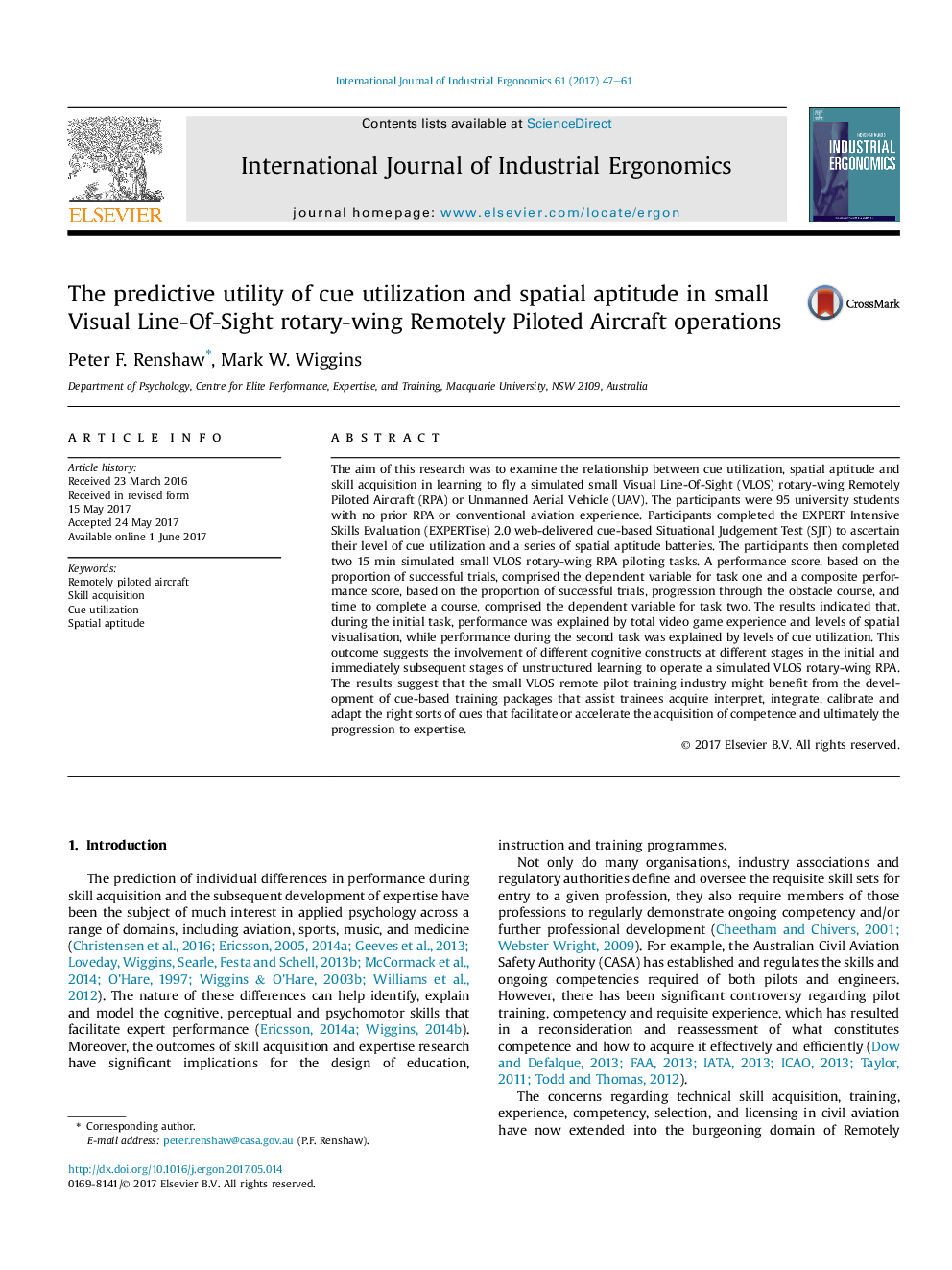| کد مقاله | کد نشریه | سال انتشار | مقاله انگلیسی | نسخه تمام متن |
|---|---|---|---|---|
| 5123662 | 1487414 | 2017 | 15 صفحه PDF | دانلود رایگان |
- Relationship between cue utilization, spatial aptitude and skill acquisition.
- Learning to fly a Visual Line-Of-Sight rotary-wing RPA..
- Role of cue utilization in skill acquisition varies across learning continuum.
- Different cognitive constructs implicated at different stages of unstructured learning.
- Implications for remote pilot selection, training, system design.
The aim of this research was to examine the relationship between cue utilization, spatial aptitude and skill acquisition in learning to fly a simulated small Visual Line-Of-Sight (VLOS) rotary-wing Remotely Piloted Aircraft (RPA) or Unmanned Aerial Vehicle (UAV). The participants were 95 university students with no prior RPA or conventional aviation experience. Participants completed the EXPERT Intensive Skills Evaluation (EXPERTise) 2.0 web-delivered cue-based Situational Judgement Test (SJT) to ascertain their level of cue utilization and a series of spatial aptitude batteries. The participants then completed two 15Â min simulated small VLOS rotary-wing RPA piloting tasks. A performance score, based on the proportion of successful trials, comprised the dependent variable for task one and a composite performance score, based on the proportion of successful trials, progression through the obstacle course, and time to complete a course, comprised the dependent variable for task two. The results indicated that, during the initial task, performance was explained by total video game experience and levels of spatial visualisation, while performance during the second task was explained by levels of cue utilization. This outcome suggests the involvement of different cognitive constructs at different stages in the initial and immediately subsequent stages of unstructured learning to operate a simulated VLOS rotary-wing RPA. The results suggest that the small VLOS remote pilot training industry might benefit from the development of cue-based training packages that assist trainees acquire interpret, integrate, calibrate and adapt the right sorts of cues that facilitate or accelerate the acquisition of competence and ultimately the progression to expertise.
Journal: International Journal of Industrial Ergonomics - Volume 61, September 2017, Pages 47-61
